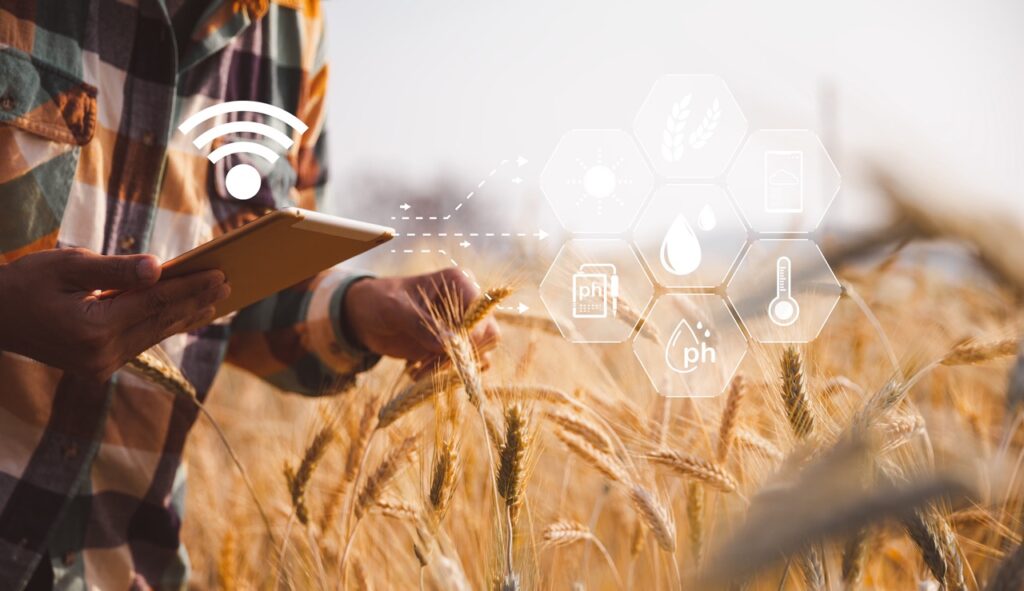Ranch Life: Water Visibility is Critical Part 1
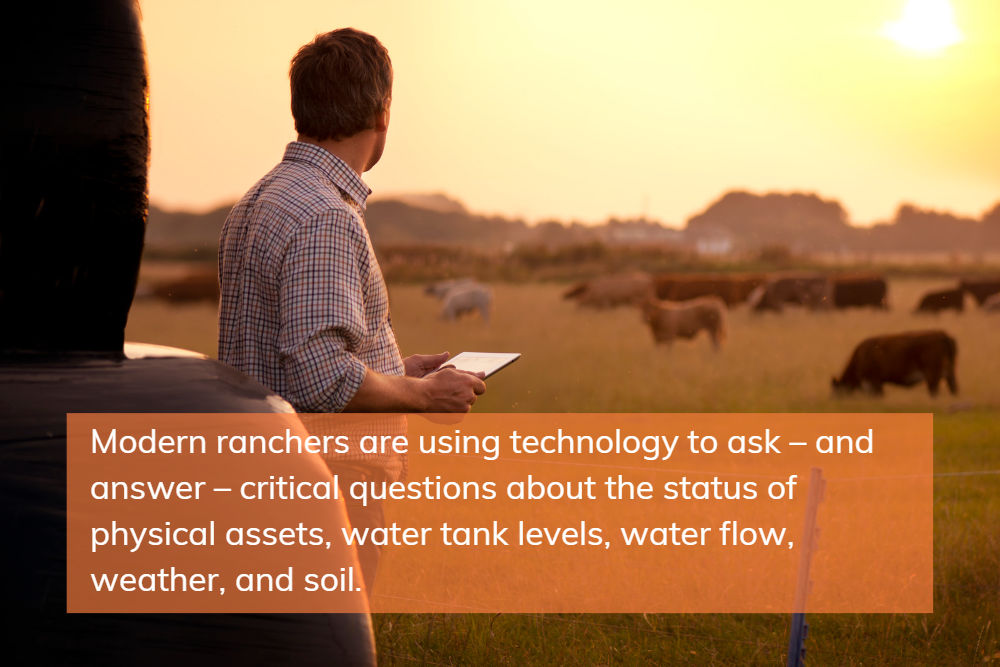
There is no average day in the life of a rancher. Many kickstart their morning at 4 a.m., when most people are still fast asleep. After breakfast, the real work and the long day begins. It might include mending fences, checking grass levels across thousands of acres, rotating cattle or even being called unexpectedly to tend to a neighbor’s sick animal. All this is done by riding the land or rolling out trucks in hard-to-reach places with little or no cell coverage – and so much connects back to water. From land and hay operations to logging and livestock operations, water conservation touches almost every aspect of ranch performance and profitability. Take JJ Goicoechea, for example, who travels at least 40 miles a day (one way) to check on the viability of the water on his land for the surrounding cattle and wildlife. Or Bob Skinner, who used his own funds to purchase an airplane as a means to check on his pipelines every 48 hours. These examples, courtesy of the Public Lands Council, show observation and measurement for better on-ranch performance is nothing new for ranchers. What has evolved is how the modern rancher observes and measures today with near real-time visibility, particularly when it comes to water management. Water Becomes a Commodity It’s no secret that water is a rancher’s most valuable asset. Safe, clean, abundant water sources are necessary for the health of the herd. Water impacts the profitability of ranch operations, many of which were handed down from previous generations. There’s a new challenge, though, that the men and women who homesteaded the land did not have to contend with: extreme weather and unreliability of water sources. Case in point: 2012, when two-thirds of the lower 48 states were in a drought. Or earlier in 2022, when according to the U.S. Drought Monitor, more than 32% of western states, including Texas, Utah, Oregon, and New Mexico, were in a severe drought – the worst megadrought reported in 1,200 years, according to Scientific American. With the unpredictability of nature and the need to conserve reliable, clean sources of water, a better, more efficient way to store and sustainably save water is surely needed. What if You Could See the Entire Ranch on Your Device? Just like their forefathers, a rancher’s keen eye for observation and measurement serves them well. There’s a gut check to making decisions, and experience guides the way. That will never change. The modern cowboy, however, is evolving in one significant way: they can now see their entire ranch operation in real-time on a connected device: cell phone, tablet, laptop or desktop computer. Here is how near real-time visibility – being able to see the different parts of a ranch without physically being there – works. Sensor technology “carries the water” for ranchers and farmers, helping them visualize what’s happening across thousands of acres without having to physically roll out trucks. These devices, or “things,” then relay data back to ranchers so they can make informed decisions based on near real-time visibility. It’s like having extra “eyes and ears” spread across the ranch. In short, these connected devices are the Internet of Things (of the ranch) or IoT, for short. FreeWave provides a drop-in solution – our Tank Level Monitor – that’s easy to install, set-up, and manage. For any of us, you don’t know what you don’t know. For ranchers, this knowledge gap comes with a price as rising fertilizer, equipment, and input costs squeeze margins. Every unexpected cost is closely watched. A dehydrated calf in peril costs more than a thousand dollars to replace. A blown tire on a truck shows up on the P&L. Man-hours spent checking water levels and the status of equipment add up. When it comes to water consumption, IoT is making a difference. According to a research report conducted by Transforma Insights and 6GWorld, by 2030, connected devices and the information they impart will help conserve close to 230 billion cubic meters of water. What does that even look like? Here, we turn to beer to help us out. Considering 40 million cubic meters of water is equal to about 300 billion pints, IoT is predicted to save the same amount of beer consumed at Oktoberfest in Munich for two straight decades. That’s a lot of water saved. While 35% of those savings will come from smart water grid operations, the remaining 65% will be driven by “IoT-enabled agricultural operations like crop management and remote pest control,” according to the report. What Observing and Measuring Means Today Connected devices save valuable time, money, and resources. They give ranchers “eyes and ears” into their entire operation and support what these stewards of our land have always done well: observation and measurement. Modern ranchers are using technology to ask – and answer – critical questions about the status of physical assets, water tank levels, water flow, weather, and soil, like: Do the stock tanks have enough water to keep the livestock healthy? Is there excess water in the soil that will lead to ponding? Are we irrigating the hay fields with too much or too little water? Are equipment like livestock trailers and tractors running smoothly? What’s the condition of remote pumps – are they working, is there a leak, is the herd getting what they need when they need it? A long-held rule for ranchers is that they don’t quit when they’re tired, they quit when they’re done. We aim to support ranchers in getting more of the right things done – with less water, waste, and worry. Talk to FreeWave today and see how our solutions can help you save time, energy, and money with a drop-in solution that just makes sense.
The Impact of IoT on the Future of the Oil and Gas Industry
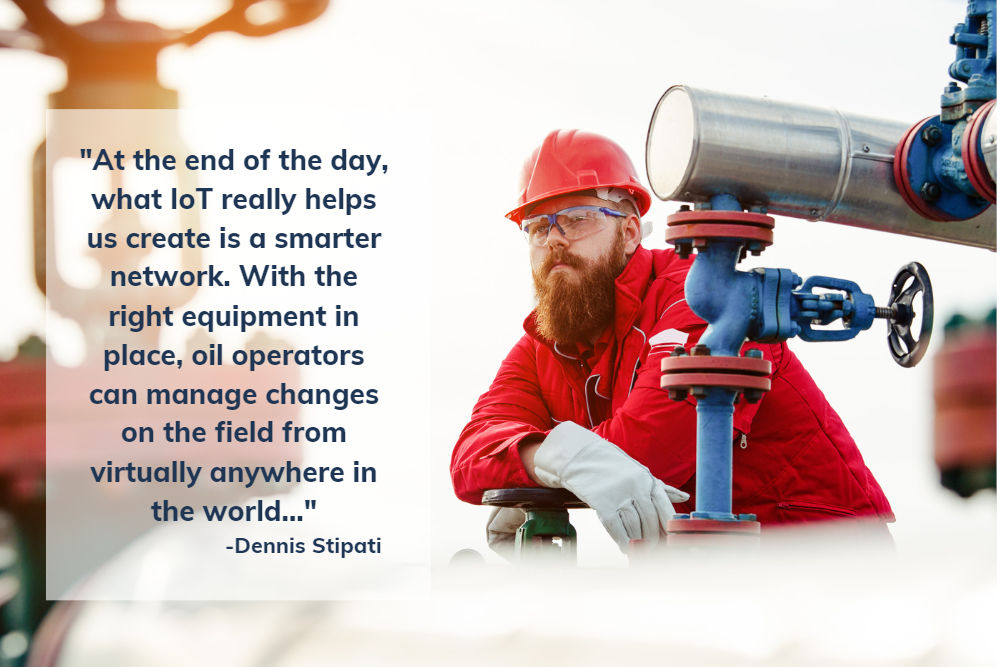
A global expert in telecommunication, Dennis Stipati talks about how today’s energy companies are doing more with the same amount of resources and how FreeWave sees the future for smart oil fields. A true industrial transformation is taking place as we speak. Connected devices delivering data to technicians and managers through the internet – what we all know as the Industrial Internet of Things (IIoT) – are transforming efficiency and productivity for forward-thinking energy companies. Oftentimes, wells are located many miles apart in extreme weather conditions or might even be offshore on an oil rig. Through digitalization, oil and gas leaders are implementing innovative strategies to do more with the same amount of people and resources while increasing overall safety and environmental sustainability. Here, we explore the impact of IIoT in the oil and gas sector with FreeWave’s Senior Director of Strategic Accounts, Dennis Stipati. Q: The Industrial Internet of Things (IIoT) is significantly impacting every industry; what are the top problems IIoT is solving for energy companies?? Dennis: From the operations side of things, being more efficient and increasing revenue is huge. Over the last year or two, there’s been a lot going on in our world. There’s not enough gas, not enough oil, and on top of that, we’re trying to get the oil and gas that we do have to the right places. That’s where IIoT steps in, helping us increase revenue and improve efficiency within operations. For example, if a drilling rig is down for a short period of time, that oil company could lose millions of dollars, potentially. It’s important to be able to remotely control the different sensors on that oil rig so that downtime is decreased and productivity and overall revenue is increased. That’s one benefit. On the other end, IIoT also impacts the overall safety of workers on the field and the surrounding environment. In the past, oil operators weren’t able to get the type of detailed operational information that we have access to today, and this data makes a big difference in reducing safety hazards on the field. With the right equipment in place, we can see when machine parts need to be replaced before their end of life. We can also virtually measure the amount of oil that’s coming through the pipelines and see if there are any leaks or dangerous chemical exposures before a crisis arises. IIoT also helps us control the day-to-day management of our operations from anywhere in the world, which leads to greater sustainability. Say there’s a methane leak of some sort. We can now respond to a situation like this immediately instead of after hundreds of thousands of gallons have been released into the environment. A decrease in environmental hazards means a safer and more sustainable world for all of us. At the end of the day, what IIoT really helps us create is a smarter network. With the right equipment in place, oil operators can manage changes on the field from virtually anywhere in the world, no matter if it’s a change flow, tank pressure, or even the temperature. With a smarter network, these decisions can be made on the edge. Q: How does the use of IIoT in the oil and gas industry impact the everyday person? Dennis: IIoT in oil and gas is important for a number of reasons, but the biggest thing most people pay attention to is gas prices. Whether it’s filling up their car or paying for natural or propane gas, this is an industry that affects all of us. It’s important for oil operators to be as efficient as they can so that they can make a profit and then pass along those cost savings to everyday consumers so that we can continue to do the things that make up our daily lives. Q: What FreeWave products are currently being used in the oil and gas industry? Dennis: It seems like every day, a new app is invented to help make our lives easier. I think FreeWave products function in the same way. Our IIoT solutions, including Zumlink™, ZumEdge®, Fusion™ Bridge radios along with our FreeWave Edge software platform, help our customers operate with greater efficiency and make better decisions on the edge. We currently have our products right on the drilling rigs. A lot of times, these platforms are fairly large, and they’ll have five or six radios on a drilling rig, maybe even more, that are wirelessly interconnected. Our products are also used on the pipeline to measure the flow of the natural gas going through that pipeline as well as the temperature. Some of our radios are used in the terminals to connect a tank to the back office or monitor a fracking pond to make sure there are no leaks. Honestly, I feel like every week, I learn a new way a customer uses our products. You think you know it all, and then someone else comes back and shares a different way they are using our solutions within their remote operation. Q: As you look at the future, and the role of IIoT within it, what excites you the most? Dennis: The common theme I keep seeing in technology is automation. Our population here in North America and even in Europe is decreasing. Recently, I read a report that said there are two jobs available for every person that’s looking for employment. How do we fix that? Automation. The more we use IIoT, the more we can make better decisions without human intervention. Machine learning, autonomy at the edge, and computerized systems, these things all make a big difference in the day-to-day management of our operations. I think we forget just how much more efficient and productive our lives are today because of technology. When I look at my life and think about the evolution of basic TV to streaming services or the transformation of the bag phone to the iPhone, I’m really amazed at how far we’ve come in such a
Technology Revealed: Unraveling Data Accessibility for Industrial IoT
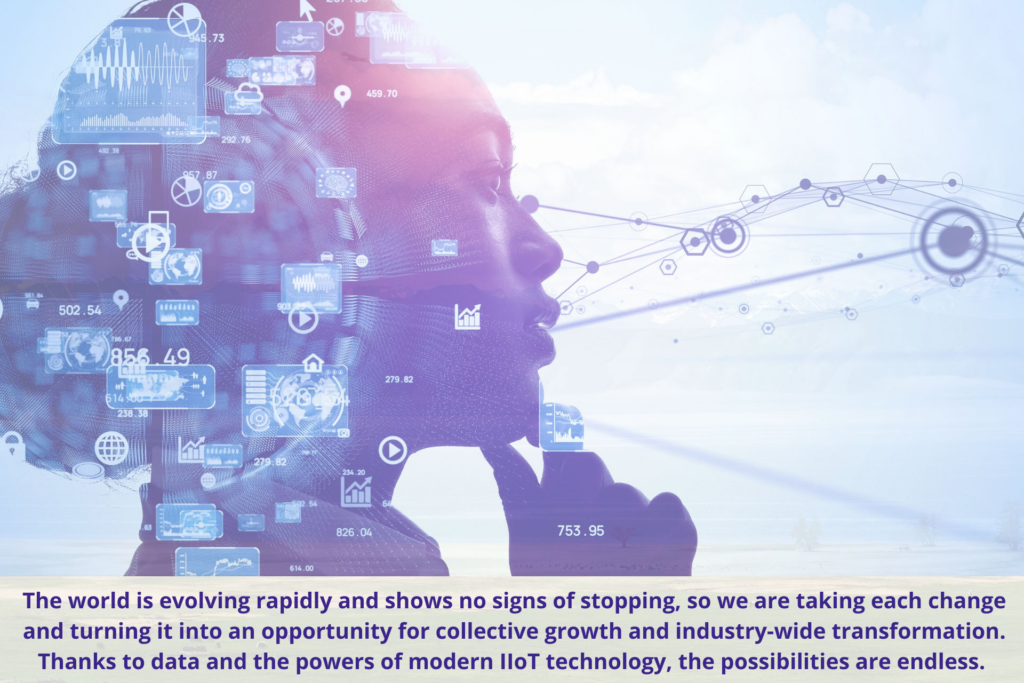
Our world is full of endless possibilities. Thanks to modern technology, we are more digitally connected than ever before. According to Statista, there will be upwards of 30.9 billion connected internet of things (IoT) devices by 2025. From smartwatches and traffic cameras to medical sensors and security systems, the more technology in effect, the more data we are able to collect. If you’ve heard it once, you’ve heard it a hundred times: data is everywhere, and it continues to be an incredible asset for leaders across industrial environments. Today, our widespread access to data allows us to make informed and intelligent decisions based on accurate intel. Something as simple as knowing soil moisture levels or the outside temperatures helps us respond to environmental needs in strategic ways. While data accessibility is undoubtedly a positive thing, it doesn’t mean much if we don’t have the tools needed to act upon those same data insights available to us, and this is where technology makes a tremendous difference, especially for industrial leaders. When we take the revolutionary power of the industrial internet of things (IIoT) and pair it with the wide range of data metrics available, we can intentionally foster better industrial environments across the globe. Our increased access to data, paired with the modern revolution of IIoT technology, allows us to respond to real-world problems with timeliness, precision and contextual intelligence. Together, this dynamic pair fosters safer, faster and more efficient environments for all. The power of time and context When it comes to data accessibility and Industrial IoT, there are many profound revelations of impact, time being just one of them. In industrial environments, timing is everything. It’s the difference between a healthy crop and a wasted harvest for the smart farmer; it’s the difference between an uncontrolled wildfire and a self-contained outbreak for the modern firefighter; it’s even the difference in what could’ve been merely a small oil leak rather than the environmental disaster we now know as the Deepwater Horizon oil spill. Data accessibility provides us with timely information on the surrounding contexts of our environments, and with the right tools, we can respond to this information faster and more efficiently than ever before. Contextual intelligence Next in line to the value of timing, lies the power of contextual data, also known as contextual intelligence. Contextual intelligence is a game-changer for the industrial leader, as it provides a deeper level of understanding and offers an enhanced sense of accuracy for production. Think of any environmental disaster, be it a forest fire, dust storm or even a carbon monoxide leak. While IoT solutions cannot prevent these events from happening, they can provide immediate insight to these occurrences based on contextual analysis. With the right sensors in place, data is retrieved and distributed, making room for timely interception. With the proper insight, operational leaders and manufacturers can observe what’s happening in critical environments and make intelligent decisions based on the contextual data available. Today, IIoT solutions allow us to control external environments virtually anywhere in the world without laborious human intervention. In this modern age, the simple switch of a button or command from a control center can adjust the outputs of remote operations everywhere. We call it a single pane of glass approach. When emergencies arise that need immediate attention, these same IIoT solutions help us respond quickly and efficiently, ultimately maximizing people’s time more effectively. The role of intelligence In addition to time and context, the third component is intelligence. Data takes the guesswork out of problem-solving and invites us to respond with precision-based strategies. Think about smart farmers, for example. With proper insight into the correct data like soil moisture levels, external temperatures, climate measurements and other relevant intel, these farmers can cultivate the most favorable conditions for a quality harvest. Without this information, farming becomes a guessing game that varies from year to year, but when this data is paired with IIoT solutions, agriculture becomes much more about intelligent strategy. Looking ahead, the digitization of farming is quickly becoming a necessary solution. Our world population is rapidly increasing every day, leading us to grow by 2 billion people in the next 30 years alone! A significant increase in people requires a significant need for accelerated food production. In fact, it’s reported that we will need to increase crop yields and harvest more food in the next 30 years than we’ve had to produce for the last 10,000 years combined. Though these statistics are extreme, they don’t have to be alarming because with the right technology in place, society will be up for the task at hand. The interconnected work of data and IIoT takes smart farming to a whole new level, making it less of a gamble and more of a controllable process from seed to harvest. Beyond the world of just smart agriculture, data impacts the role and work of IIoT solutions across every industry, including water and wastewater, electricity, oil and gas, transportation and traffic and many others. Our ability to access data empowers us to leverage IIoT technology most intelligently; it’s the “work smarter, not harder” mindset at its finest. Technological pioneers At FreeWave Technologies, we are passionate about creating real-world solutions for everyday needs across industries. In a world that is changing with rapid succession, connectivity is critically important for industry leaders, remote operations and the basic good of society. We need tools and products that help us act on data quickly and precisely, and our line of products is helping our customers do just that. FreeWave products take the complexity of industrial IoT applications and simplify them for the user, creating a digitization strategy that connects data with life. Our easy-to-use applications allow controllers to respond to their deployed assets from one place with timeliness, intelligence and precision. At FreeWave, we are pioneering a new way forward, promoting connection, safety and innovation along the way. The world is evolving rapidly and shows no signs of stopping, so we are taking each
The Unlikely Marriage of Sustainability and IIoT
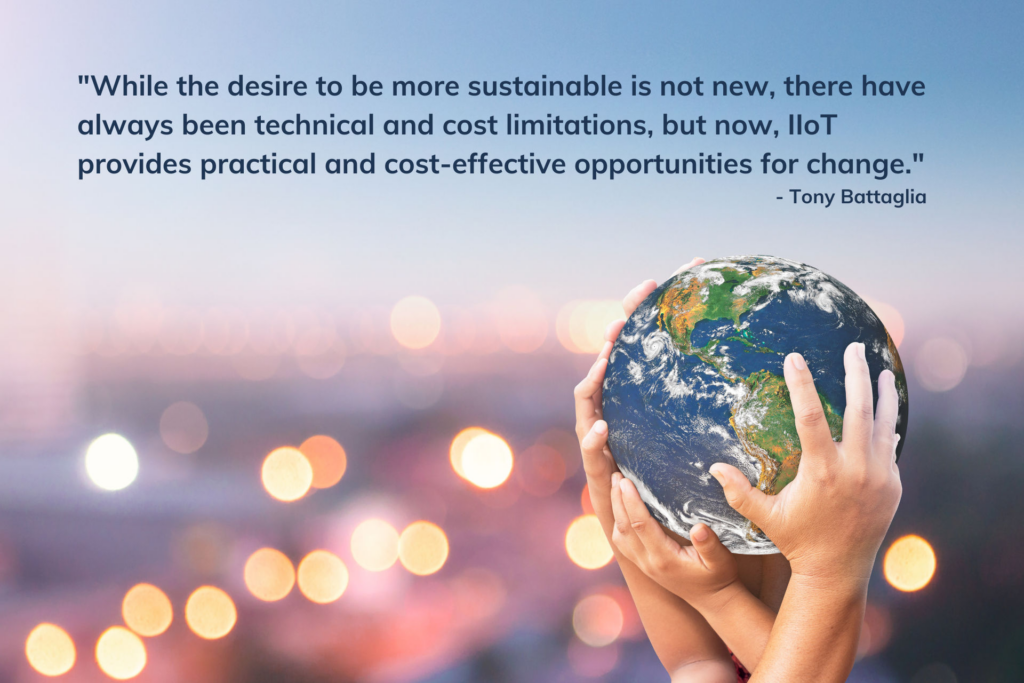
When I think about technology’s impact on sustainability, I think about home. I live in California, and earlier this year there was a fire in my area which, unfortunately, destroyed a lot of houses and affected many families. Luckily, because my city deployed industrial internet of things (IIoT) solutions for fire protection services, they were able to detect this fire early on and prevent further damage in the area. In this scenario, IIoT solutions provided timely insights which allowed the appropriate resources to respond faster, creating a better and safer future for my community. The unlikely pair Sustainability is a widespread conversation these days, and for good reason – a more environmentally conscious world equals better quality of life for us all. As such, electric cars are on the rise, paper straws are everywhere and many companies are doing their part to minimize their carbon footprint. As a collective, we are making great strides in our attempt to create more eco-friendly communities. Amidst our best efforts, however, many may not realize the positive and profound role modern technology, specifically IIoT, can have on our journey towards a greener society. This may come as a surprise, but now more than ever, IIoT is playing a key role in realizing our sustainability goals. Real-world change Today, IIoT technology is completely enhancing our approach to transformative environmental practices by providing the power of response. By implementing IIoT into our data, we can do much more than just monitor data; we can actually respond to data by pulling trends, sending out alerts, leveraging artificial intelligence and so much more. IIoT allows us to take data-driven action, and this is ultimately having a significant impact on the environment and entire industries across the globe. Industry-wide impact In 2015, The United Nations Member States all adopted the 2030 Agenda for Sustainable Development. This global partnership calls countries into action to create a stronger planet by implementing eco-friendly strategic practices to achieve 17 different Sustainable Development Goals (SDGs). Technology plays a significant role in realizing these SDGs. In fact, there are a variety of industries becoming more sustainable because of IIoT. Let’s look at energy, for example. Recently, the energy space began implementing environmental and social governance (ESG) criteria. Now, different organizations can receive access to various federal funds depending on their ability to meet ESG standards. Without the use of IIoT practices, procedures and functions, these organizations could not make the improvements needed to contribute to their environmental goals. With the use of IIoT, these same companies can effectively monitor and manage environmental assets through automated procedures that contribute to more efficient industries and remote work environments across the board. Ultimately, IIoT technology offers the insight and practical solutions needed for these companies to create positive structural changes. The benefits don’t stop there. We’ve all heard or read that our water supply is endangered, and this is not just a California issue, like many assume; it’s a widespread problem that needs immediate attention. The rapid rate of water decrease is not just a byproduct of human consumption, it is also a direct result of everyday processes, industrialization and the ever-changing climate. Today, IIoT products are providing simple solutions to monitor timely data metrics like rainfall rate and water consumption. These solutions respond to water shortages and water waste in innovative ways. Through IIoT, we now have the ability to adjust and adapt our behaviors based on data visualizations, and throughout the process, greater sustainability is achieved worldwide. The IIoT difference on finite resources With sustainability, the goal is really to manage the lifespan of an existing asset, be it drinking water, livestock, oil and gas, the list goes on, and with IIoT technology, we can better control our ability to manage these assets. While the desire to be more sustainable is not new, there have always been technical and cost limitations, but now, IIoT provides practical and cost-effective opportunities for change. At FreeWave Technologies, we’re committed to improving life’s essentials through Industrial IoT solutions. Our full line of connected IIoT network solutions bring most needed data to operations teams wherever they are and our ready-to-deploy solutions play a significant role in environmental monitoring ultimately leading to safer and more sustainable communities. When it comes to Environmental IoT™ we are spearheading a new way forward, offering solution-based products that empower industrial leaders to manage their assets simply and intentionally. Our single pane of glass dashboard creates a singular view for our customer, allowing them to track, control and respond to timely data metrics in one place instead of multiple dashboards across applications. Products that solve problems are important, and that’s exactly what we’re providing at FreeWave. We’re shifting the culture of sustainability from altruism to action, and it’s making a substantial difference. At the end of the day, I care about the world that I’m leaving for the next generation. Every day I think about my two children and the world they’ll grow up in; I want to do my best to create a place where they can thrive, and I’m excited to be a part of an organization that is achieving just that.
Technology’s Impact on Air Quality Control Monitoring
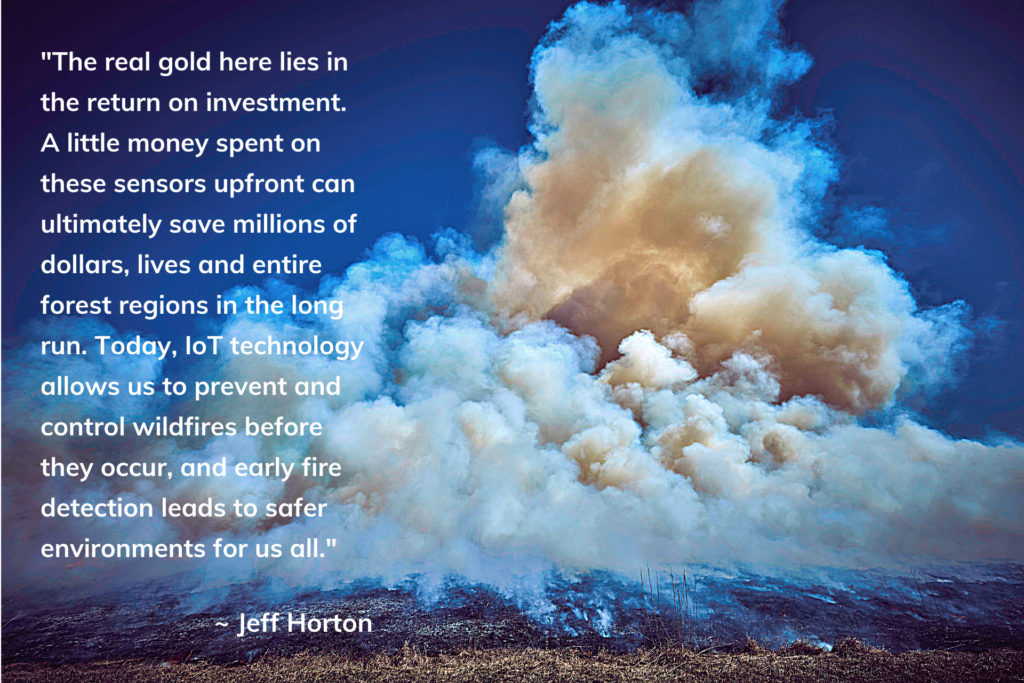
At this very moment, wildfire season is currently underway in North America, and since the start of this year alone, more than 27,000 wildfires have consumed nearly two million acres according to the National Interagency Fire Center (www.nifc.gov). Though many people hear the word “wildfire” and immediately picture a forest in California, the reality is these natural disasters are prevalent across the country. Wildfires are everywhere The Verge, a technology news website, announced recently that roughly 56% of homeowners in the United States face some sort of wildfire risk in the upcoming decades. Bottom line: wildfires are becoming more prevalent and costly every day, and these fires are affecting more than half the population and significantly changing our quality of life. Just a few decades ago, we didn’t have the technology to prevent or predict changes in the surrounding air quality, but now we do, and through it, we can create a better world. Today’s technological advancements allow us to be proactive rather than reactive when it comes to our overall health and safety. By leveraging sensor technology, we have a better chance of predicting and preventing significant changes in the environment, like a drastic shift in air quality before a wildfire begins. This insight allows us to make better decisions based on intentional insights, and our increased access to data provides us with the right information to better control our surrounding environments. Technology is powerful, and this power can and should be used to our advantage. One of my favorite ways to witness the power of technology transforming real-world issues is by exploring the ways sensor technology has a tremendous impact on air quality control monitoring. Today, internet of things (IoT) technology and satellite are the best tools for early detection and prevention of wildfires. Our approach to air quality control Believe it or not, air quality has as much impact on the world as the daily temperature. With climate change causing drastic shifts in the environment, it’s important that we pay close attention to the quality of the air we breathe, as it affects our overall quality of life. As you know, trees play a critical role in our ecosystem, so we must be very intentional and proactive about protecting the forests around us. This is where sensor technology makes a big difference. With a small machine, we can now track and predict changes in the environment and our surrounding air quality, which ultimately helps us control, prevent and predict conditions that lead to wildfires. At FreeWave, we provide autonomous sensors that are strategically placed in remote locations to track and record relevant data metrics such as temperature, humidity, wind, direction and particulate matter. These readings help industry experts know what’s in the air and how the air is changing. Once this data is collected and transmitted to the cloud, we are then able to analyze it and provide alert and proactive responses where needed. We have created a single pane of glass approach, where anyone with access can log into a portal and see in real-time what is happening in the areas surrounding their deployed sensors. The interesting thing about our sensors is that they are fully powered by solar energy, and satellite signals transmit the recorded data. We are basically offering a “buy, install and forget” resource that makes life significantly easier for industry and environmental experts. There is a ton of value here. Not only are we taking an in-depth look at what’s going on in the environment through air quality control monitoring, but we are also taking that information and transforming it into action. The real gold here lies in the return on investment. A little money spent on these sensors upfront can ultimately save millions of dollars, lives and entire forest regions in the long run. Today, IoT technology allows us to prevent and control wildfires before they occur, and early fire detection leads to safer environments for us all. A unique human aid We are making life simpler and safer for all by using technology to do what humans can’t. Back in the day, people had to sit in an operation tower for hours, looking out to catch any major changes in the environment. Today, there is a major shortage of people willing to do this kind of work, and can you blame them? As humans, we can only be in one place at a time doing one thing at a time, but with technology, this is not the case. With simple sensors, we can now monitor and control a lot more environments at a much more affordable rate. All this to say, the goal here is not to replace humans with technology as some might think; what we are really doing is enhancing human ability through the power of technology. I’ve worked in technology for over 30 years, and every day I witness its evolution. I know it’s hard to imagine a world without cell phones, but I can still clearly recall the days when cell phones took up the entire trunk of a car, and now look at the world, most of us carry the same ubiquitous smartphone in our pockets. Technology is amazing, and we have the opportunity to use it to our advantage. At FreeWave, we are taking the capabilities of mobility – LTE, 4G, Satellite, Wi-Fi, Bluetooth, 900 MHz– and marrying them with sensors. The data we gain from these sensors is saving us time, money and resources. At the end of the day, we’re taking away the need to “overthink” industry issues, like how to better prevent forest fires, and instead are replacing our questions with data-informed predictions and timely proactive responses. Every day, we strive to provide industry leaders with the tools and technology needed to spearhead faster and safer environments for us all. This is certainly not a boring business, and I thoroughly enjoy working for a company that is using technology to have an impact on the things that matter most.
Got Data? Now what?
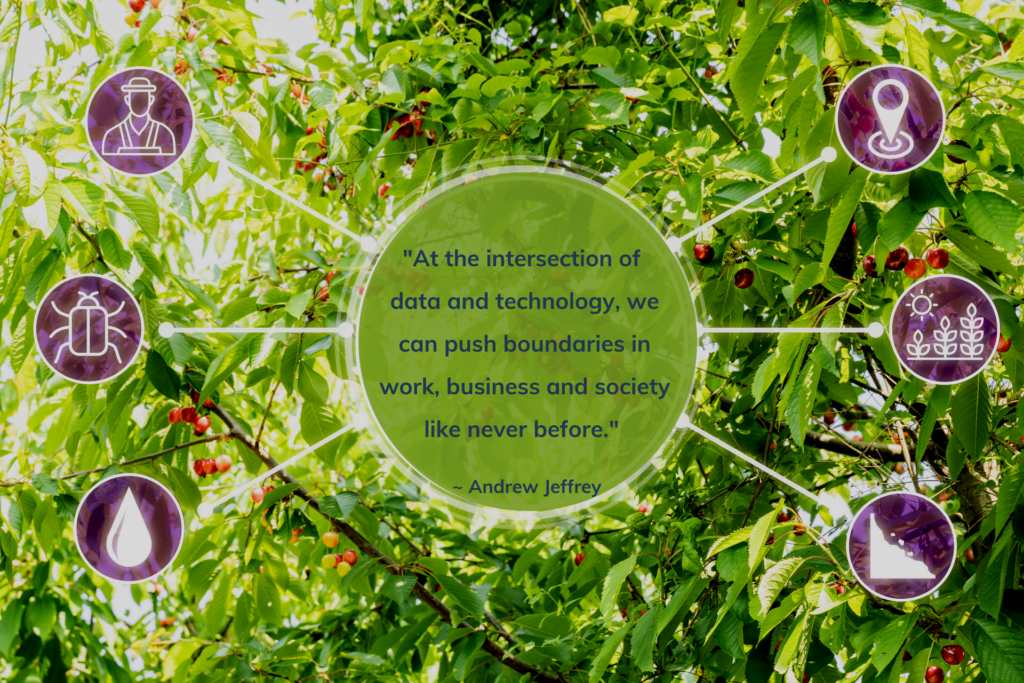
It’s hard to imagine a world without the daily convenience of modern technology. Just yesterday, I joked with my kids about the world before the internet – a time when we actually had to go to the library to look up unknown information. I can still remember the early days of my college career back in the late 90s, the internet had just come out, and we were all getting used to this new phenomenon called a “search engine.” Life has drastically changed over the last 25 years. Now, nearly all the information we want and need is at our fingertips. Today, we have more access to data than most people know how to handle. Data is all around us, collected through the day-to-day actions and reactions of our lives. When we take the time to intentionally analyze, interpret and distribute the data metrics available to us, we can make smarter and more efficient decisions. There is so much to explore, and while our increased access to data is pretty interesting, the reality is that the combination of data and modern technology can change the world. Like many things, though, there are two sides. Sure, industrial companies can capture huge amounts of data, but it also raises the question: now what? How do you put all that data to work? Breaking barriers and pushing boundaries At the intersection of data and technology, we can push boundaries in work, business and society like never before. Data insights allow us to be more precise and accurate in our day-to-day work, which allows us to be more effective and efficient. The operational benefits here are endless, including improved quality control, reduced energy consumption, enhanced safety and increased operational consistency. Just take a look at the food industry, for example. Many field workers in smart agriculture rely heavily on data insights to control, predict and create the best environments for quality crops and harvest. The more accurate their predictions, the better their harvest, and the better their harvest, the faster we receive our food through the supply chain. Today, internet of things (IoT) technology can connect remote and mobile assets, like a tractor, for instant data access, making it easier for farmers to be more efficient and effective in their work. It’s really amazing when you think about it. Data is transforming how we operate in this world, creating better environments for us all. The FreeWave impact At FreeWave, we are constantly pushing the boundaries of technology to create faster, smarter and more efficient work environments. I’ve been a part of the FreeWave team since 2019, and I am constantly amazed at the ways our technology provides innovative solutions for real-world issues. Our products enable our customers to improve their work processes, and through our single pane of glass approach, we offer a simplified experience for businesses and industry leaders to receive automated technology that transforms data metrics into real-time execution. One of my favorite use cases to discuss is FreeWave customer that uses drone technology to deliver food and other valuable resources to far-reaching areas across the globe. With FreeWave products, they can run a smarter and more efficient operation. Their robotics delivery system is combating many of the complex access challenges the world faces on a daily basis. Our IoT technology is helping them solve complex issues with simplified tech solutions, and simple solutions create more time, energy and space to focus on what matters most: people. If you need a product to help you bridge the gap between technology and data, FreeWave is your solution. We are enablement partners, helping every one of our customers accomplish their complex goals. It’s inspiring to work with brands and businesses striving to create a difference in real-world issues. Our technology plays an intricate role in sustaining work environments and supporting entire industries around the globe. Data makes the difference At the end of the day, data is more than mere statistics; data is the key to our efficiency, productivity and safety. Data makes the difference in energy consumption reduction. Data makes the difference in the overall quality and safety of our daily environments. Data makes the difference in everything. Every day we have the opportunity to use data to our advantage, and at FreeWave, we are helping industrial innovators do just that. As technology continues to evolve, we will continue to provide top of the line IoT solutions that transform data into actionable insights and execution so you can not only access a treasure trove of data, but also know exactly how to answer the age-old question: now what?
Data is everywhere, even on Mount Everest: Sensor-to-cloud and extreme environments
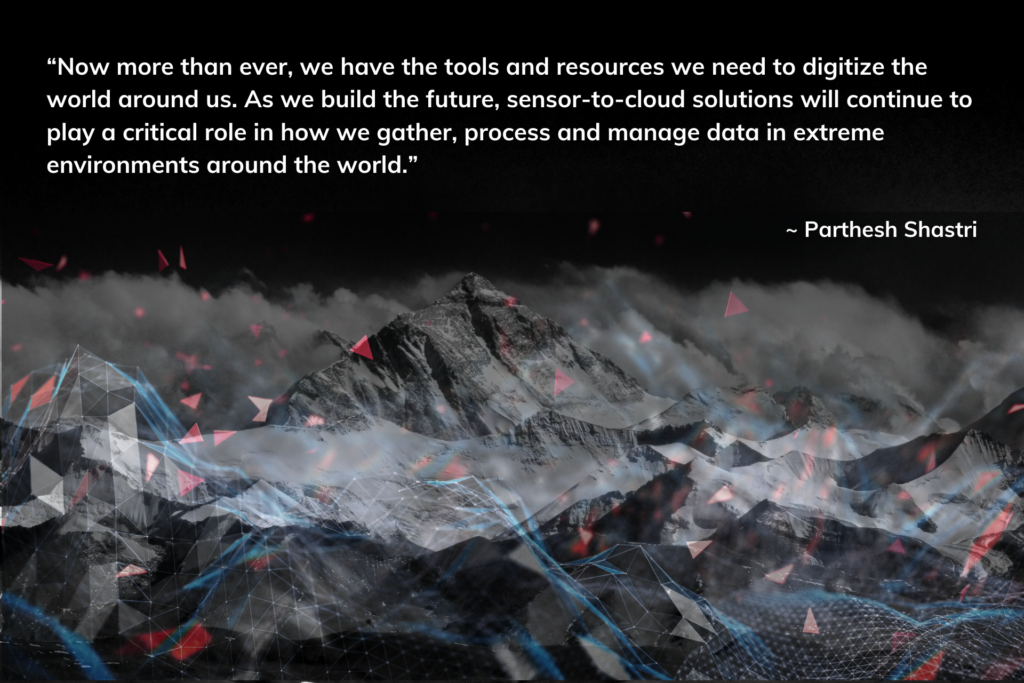
Technology – from Mount Everest to the farm It’s amazing what technology can do when paired with human will. Just a few years ago, a team of scientists made history as they trekked up Mount Everest with the goal of running environmental studies. With backpacks full of sensors (which included FreeWave technology), these men pushed boundaries to create a new normal. When we intentionally use modern technology to our advantage, we can create better, safer and more productive environments within every industry. Today, the same technology used on Mount Everest is now powering multiple earth science programs transmitting sensor data from remote environments to earth scientists, climatologists and meteorologists through cloud servers. This is just one example of many where sensor-to-cloud solutions have transformed our ability to interact with extreme environments in the modern world. A deeper look at extreme environments Typically, when someone thinks of an extreme environment, they imagine harsh, rugged terrain in a far-off remote location; however extreme environments aren’t limited by this definition. Take a large farm, for example, with a multitude of deployed assets and equipment across hundreds of acres. Traditionally, an operation like this requires an employee to physically check on the farm equipment multiple times a week, manually turning valves on and off, in addition to monitoring and controlling the overall farm environment. These day-to-day tasks are not only time-consuming but physically draining. In this case, the operational output required on the farm makes it an operationally extreme environment, and extreme environments are just one space where sensor-to-cloud solutions shine. Sensor-to-cloud in the real world Today, sensor-to-cloud systems utilize deployed sensors to collect and transmit data from remote locations. These sensors send the gathered information back to cloud servers for further research and analysis, enabling entire teams to utilize their limited time and resources more effectively. With sensor-to-cloud systems, we eliminate the often-laborious mechanics of middlemen procedures so that industry leaders can focus on what matters most. Let’s revisit that farming example. With sensor-to-cloud technology, farmers can automate the repetitive tasks of their operations. Something as simple as discrete soil sensors further allow farmers to virtually monitor their crop health, creating more time and space to focus on other high-value tasks. This gives them time, often an invaluable asset, to do what’s needed. In a sense, we can improve the productivity of an operation with an automated suite of sensor systems. Imagine the difference a network of sensors can make. The FreeWave difference For several years now, FreeWave products have been a leading resource solution for extreme environments. Our sensors were a part of the great Mount Everest expedition, and today, we have deployed sensors in many areas, including pipelines in Alaska, ice shelves in Antarctica, smart farms across the country and many other locations – rugged and traditional. We are providing the groundbreaking technology needed to monitor data in extreme environments so that our partners and customers can make the best, informed decisions for their operations. As the Chief Technology and Product Officer at FreeWave, I am constantly amazed at the impact our products have on the world. We are working with some of the major brands of our time, helping them solve massive problems affecting society at large. Our technology solutions serve entire industries, like oil and gas, agriculture, transportation and traffic, as well as many others that contribute to the well-being of the globe. It is great to be a part of a company where we can say our products are a part of the solution for life’s essentials. Every day, we help industry leaders identify their pain points and provide them with a single pane of glass product solution that helps them see the data wherever they are without the drain of additional resources. Our rich portfolio of radios, gateways, cloud software and analytics allows us to stitch together a range of packaged ready to use applications that solve our customer’s problems through simple, turn-key solutions. Sensor-to-cloud in the future Data is everywhere, and now more than ever, we have the tools and resources we need to digitize the world around us. As we build the future, sensor-to-cloud solutions will continue to play a critical role in gathering, processing and managing data in extreme environments around the globe. As I look at the world before us, I see endless opportunities to continue to leverage technology and data to build a better and more informed life.
The Importance of Data in the Life of Bees
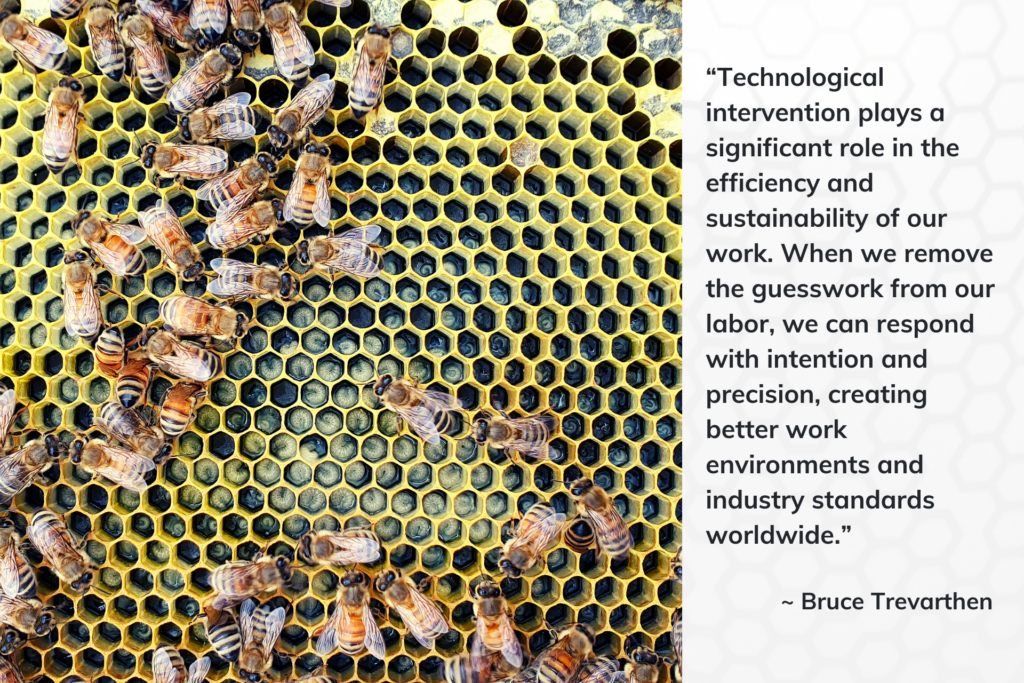
Have you heard the buzz? Data is everywhere, informing, influencing and affecting the direction and decisions of our lives daily. Due to modern technology, we now have access to a world of knowledge that was otherwise unavailable just 50 years ago. This data is gold, and when we intentionally utilize technology to mine and refine it, we can create a more sustainable world. Industrial internet of things (IIoT) technology makes a sizable and sustainable difference in multiple industries – including apiculture, the business of beekeeping. Much to my surprise, I learned that taking an intentional approach to data collection and distribution profoundly impacts the lives of bees and surrounding societies. Data and beekeeping In 2019, I went on a mission with my company ModuSense to create an IIoT solution that could aid specific industries with several deployed assets in need of environmental monitoring. After exploring applications in forestry and horticulture, our journey led us to apiculture farming and the high value commodity of honey. I believe in fully immersing myself in business and technology, so I became a beekeeper to understand the complexity of the apiculture industry better. Beekeeping is a high-value asset in New Zealand and Australia, almost exclusively because of the manuka honey variant. While traditional clover or bush honey may earn between $4-6 dollars a kilo, manuka honey can earn as high as $200 a kilo, making every drop critically important. Proper hive monitoring is essential for quality production, but beehives (especially the manuka variant) often grow in difficult terrain within remote locations, making them challenging and expensive to access regularly. Without IIoT technology, beekeeping is a naturally complicated process. Oftentimes, beekeepers must utilize helicopters to deploy and check on their hives, which is time-consuming, expensive and challenging. However, with the right IIoT solutions, such as sensors that monitor hive conditions, the beekeeping process is simplified, increasing productivity and overall harvest quality. With access to the right data, beekeepers don’t have to check on the internal conditions of their hive manually; instead, they can manipulate and control the hive’s environment from afar through sensors to create optimal conditions for production.This IIoT technology is helping us augment the beekeeping process through effective data monitoring, which is ultimately creating a simpler and more sustainable approach to hive operations. Simple solutions In many ways, beekeeping is quite similar to dairy farming, meaning better environments create better products. When cows receive access to the best pastures, they inevitably produce better milk which then creates better dairy products for us to consume. The same is true in the life of bees. When bees intentionally receive access to the best environmental conditions and quality nectar, they are able to become high-strength, crop-ready colonies which naturally produce a high-quality harvest. Effective regulation of the bees’ environment is critical to ensure the best yield, and this is where IIoT technology is making a world of difference in the apiculture industry. Bees are incredibly sensitive to barometric pressure, humidity and temperature, all of which play a role in their ability to produce as a colony; bees also need to maintain a central weight to operate at peak performance. As such, the best way to ensure a quality harvest from a beehive is to maintain the colony’s weight and manage the hive’s temperature. With proper data insights, we can do this remotely by studying and monitoring the internal collective health and conditions of the hive. Without lifting the hive’s lid, which disrupts the harvest process, we can virtually control the bees’ environment without the extra cost or time of added deployments. These insights are easy to monitor from a single pane of glass, making critical information accessible faster than a bee can fly (which is pretty fast at 20 mph!). Integrating special IIoT sensors, we developed the HiveBeats Environmental Monitoring Sensor, HiveScale V5 and Brood Monitoring Sensors that now provide precise insights into the life of a bee, which ultimately determine if and when human intervention is needed. This allows for significantly fewer errors to occur and saves time and money along the way. Data connects life – for bees and people At ModuSense, we are proud to develop timely IIoT solutions, including sensor devices, cloud-based data routing, data storage, analysis platforms and connectivity hardware to provide solutions that are easily deployed and ready to fit for purpose. In partnership with FreeWave, we are committed to accelerating hardware and software IIoT development capabilities in meaningful and immediately measurable ways for remote industries around the globe. As the CEO of ModuSense, I am proud of the work we have done to create real-life change in the world of apiculture. Our special sensors enhance the hive cultivation process by extracting critical internal data insights, all while creating a culture of industrial sustainability for beekeepers along the way. We are creating a new way forward by leveraging the power of IIoT technology to monitor data and using that insight to respond with actionable execution. Sustainability is about finding ways to use less to do more and our ModuSense sensors are doing just that for beekeepers around the globe. Today, technological intervention plays a significant role in the efficiency and sustainability of our work. When we remove the guesswork from our labor, we can respond with intention and precision, creating better work environments and industry performance worldwide. I am proud to contribute to this type of change in the life of bees and beyond.
Technology Simplified: Leveraging Data in the New Digital Era
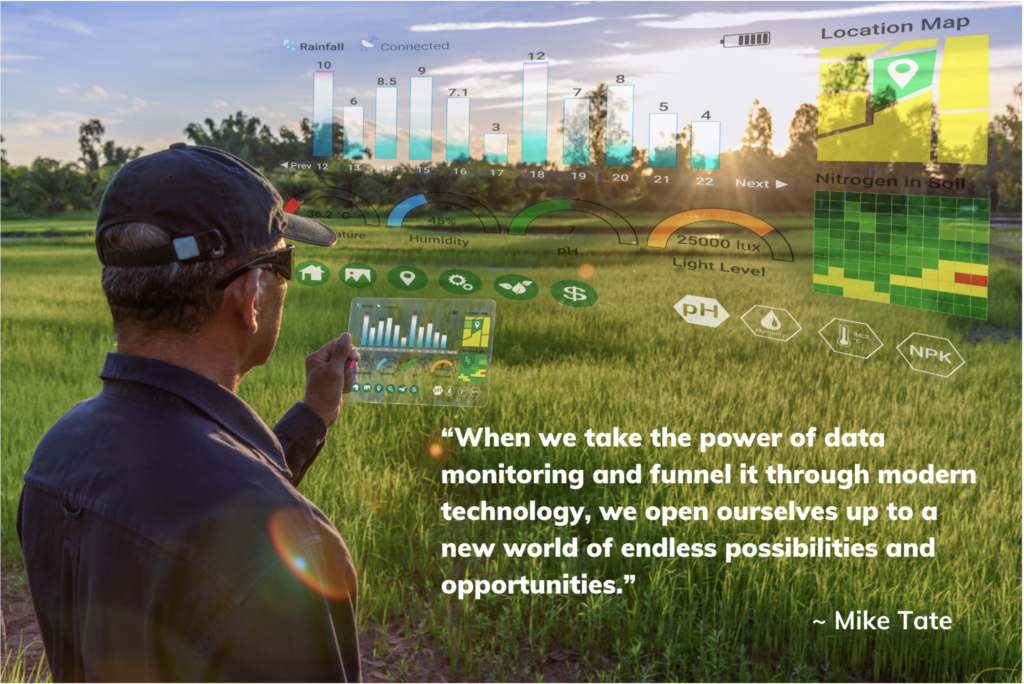
Excited by tomorrow, we face a new world filled with endless possibilities each day. Thanks to modern technology, simple sensors open the doors to our favorite restaurant, edge computing allows manufacturers to spot and correct production glitches before they happen, and high-tech traffic cameras analyze and record thousands of license plates daily to spot stolen and unregistered vehicles while also identifying suspected criminals. It’s no secret that the world is evolving before our eyes, and through the technological advancements of this digital era, we are creating a more efficient world. The power of data Data is a powerful tool of knowledge, and lucky for us, it’s everywhere! Every one of our actions is driven by a manual process of data – like the simple act of putting on a jacket when it gets cold, or an automated process of data – like a valve instinctively shutting off when a water tank gets full. Today we have the technology to effectively process, analyze and distribute data metrics in tremendously impactful ways. What does greater simplification look like for industrial leaders? Remote operations simplified When leveraged effectively, industrial internet of things (IIoT) solutions take remote operations to the next level, simplifying the work process for teams and industries across the globe. Think about some of the most popular high-value remote assets today, like drones, video surveillance, or even center pivot irrigation systems – these entities perform so well because they do what humans can’t. In mere seconds, IIoT technology can process, distribute and respond to data that would otherwise take an entire team hours, days or even weeks to achieve. In the not so distant past, industrial operations relied solely on data consumption (i.e., how much water is in the tank; what temperature is the water), but today, advancements give us the ability to respond nearly instantaneously to that collected data with actionable execution. Today we can view and control the management of an entire operation remotely on our cell phone. We can see how much water is in a tank or what temperature that water is at and automatically change and adjust the water levels and temperatures from near or far. As a result, the amount of time, resources and energy needed to run businesses has transformed entirely, and this evolution allows us to create an enhanced world and standard of work. Simple deployment Remote operations are oftentimes in rugged terrain, making them difficult or even impossible to access. At FreeWave, we solve this complex issue by providing pre-configured ready-to-deploy solutions, complete with everything needed to achieve the mission at hand. For example, through FreeWaves’s joint venture with ModuSense, we’re simplifying connectivity to cloud with a variety of pre-configured and ready to deploy monitoring and sensing solutions by supplying the entire solution with a 12-month data plan, dashboard, 12W rapid recharge solar panel, satellite connectivity and Bluetooth connectivity. You can use your mobile phone to validate the data directly from the gateway without having to wait for satellite transmission. We all know the “gotchas” when it comes to buying technology. Simple deployment means you’re ready from day one, without needing to buy additional components. Real-world impact As Chief Operating Officer and SVP of Global Sales and Marketing at FreeWave, I get a front-row seat to the real-life impact modern-day technology is having on lives, businesses and entire industries. The essentials of life have become simplified, and in the process, more people and businesses receive greater access to the things that matter most like critical information, metrics and potential outcomes. Creating a more sustainable world and preserving natural resources like food, air, energy and water have been at the forefront of IIoT since FreeWave began almost three decades ago when we brought long range, low power consumption, C1D2, 900 MHz connectivity and radio technology products to our customers. Since then, our connectivity options have greatly expanded by adding EDGE Compute, Software, Industry Protocol Conversions, Data Broker & Cloud, a complete end to end solution and with it comes the responsibility for greater environmental stewardship. We’ve all seen the devastating impact an environmental catastrophe, like the 2010 Deepwater Horizon oil spill, can have on the globe. Simple mistakes can and do cause enormous repercussions that affect us all. The truth is, with human interaction there will always be the cost of time and possible room for error. Technology, however, is different, as it allows us to not rely solely on human capacity and depend more on interconnected and advanced systems. Now, we don’t have to wait for someone to run into a situation or crisis and manually pull a lever or travel to turn off a valve. Instead, preprogrammed automation or a simple click of a button or flip of a switch from virtually anywhere in the world can control your high value remote assets. FreeWave is a technological pioneer in the 21st century. We have connected the unconnected with a reliable ecosystem of edge intelligent radios and solutions to optimize the extreme edge of remote industrial operations. Through our single IIoT platform, we provide expanded capabilities for data capture, analysis, control and automation. Our single pane of glass approach provides a simple, single vendor, one-stop-shop solution for remote operations worldwide. At the end of the day, when we take the power of data monitoring and funnel it through modern technology, we open ourselves up to a new world of endless possibilities and opportunities. It’s one thing to have data; it’s an entirely different thing to know how to leverage that data. At FreeWave, we are constantly pushing the boundaries of data monitoring and modern technology through our IIoT solutions and creating a better, safer and faster world of work for industries around the globe.
Five Ways to Improve Agricultural Efficiency With IIoT
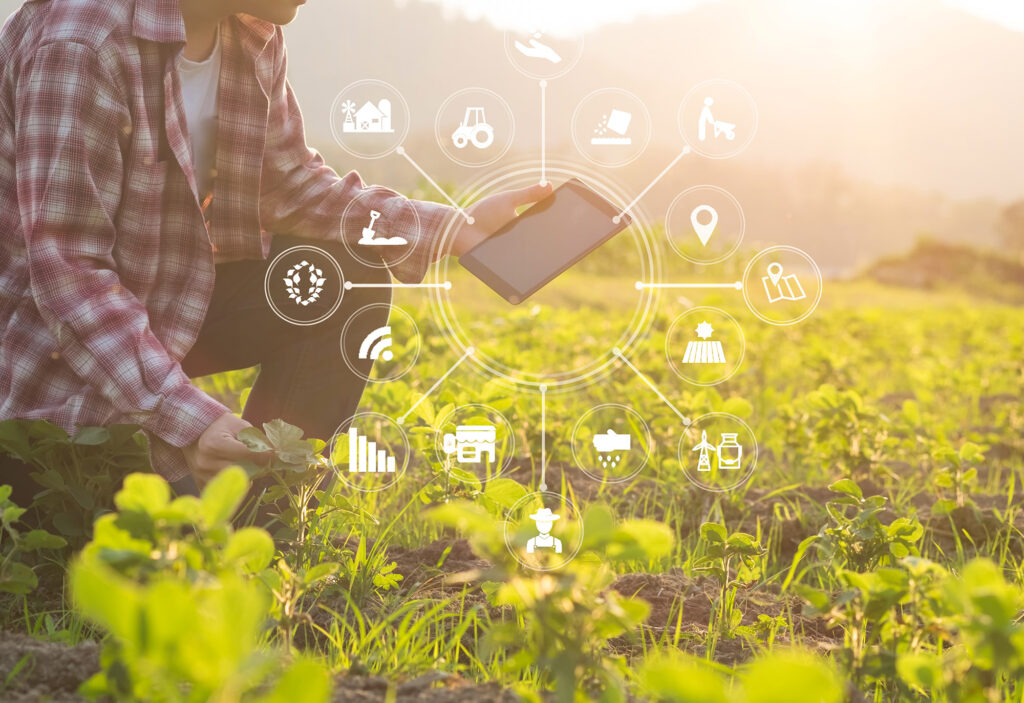
The IIoT benefits farmers and their products substantially, especially regarding how efficient growth cycles can become. Learn more in this article. It’s estimated today that half of the organizations in the agriculture sector have adopted IIoT capabilities, according to Inmarsat Research. Even those who have yet to buy-in, largely agree that the Industrial Internet of Things (IIoT) is quickly revolutionizing how farmers grow food and people gain access to healthy food on a global scale. Increased efficiency is one of the main benefits causing farmers to switch to tech-enabled smart agriculture. Below, learn why smart agriculture is quickly becoming ubiquitous, as well as five ways these tools can optimize crop yields, increase profits, and simplify the farming process end-to-end. What Is Smart Agriculture in IIoT? Smart agriculture as it pertains to the Industrial Internet of Things (IoT) is the process of fine-tuning and optimizing the product cycle using digital tools. These devices work synchronously to gather data and deliver critical insights that can be carried out by the technology itself or at the farmer’s discretion. What are the Various IIoT Tools for Agriculture? IIoT agricultural tools include, but aren’t limited to: Crop management devices that collect data such as precipitation levels, temperature, and soil quality. Agricultural drones that determine soil health from up above distribute localized pesticides and more. Cattle health monitoring and management devices. Greenhouse automation systems. End-to-end farm management systems. How does IIoT Impact Our Lives Through Agriculture Automation? It provides larger quantities of natural food for a growing population. It lowers farmer production costs, which passes on savings to consumers. It increases product standards, creating healthier food at lower price points. It keeps workers safe and allows them to work efficiently. It enables farmers to grow their business safely and effectively, with far less risk than previous years. How to Use IIoT in Agriculture to Improve Efficiency (5 Ways) Here are five ways the Industrial Internet of Things can be deployed in agriculture to improve efficiency. 1. Monitor Climate Conditions The use of sensors is one of the keys to well-executed precision farming (or precision agriculture), which is the art and science of making accurate decisions based on data. Often, climate sensors are the first piece of IIoT tech implemented in an agriculture setting. These devices monitor climate conditions, soil quality, pesticide output, and other vital levels to help farmers increase yield using fewer resources. 2. Implement Tools that Reduce Production Risk One of the significant advantages of IIoT in farming is the early identification of issues that could otherwise be missed or overlooked due to human error. This lowers production risk and gives farmers a better idea of what their harvest will look like months in advance. Lower production risk gives farmers better control over product distribution, ensuring they acquire buyers early enough in the season and don’t wind up with unsold products. 3. Use IIoT Agriculture Tools that Lower Cost and Reduced Waste IIoT capabilities reduce operational costs for farms of all sizes. More accurate data boost output without increasing staffing—and healthier, more robust crops yield better profit margins, too. According to Inmarsat, lower operating costs have created a more sustainable farming practice for 37 percent of farmers. 4. Use Technology to Elevate Crop Standards With a firm grasp of the production process and more data to conclude from, farmers can use IIoT devices to produce healthier, nutrient-dense food. A higher standard yields better profits, as well as reputation and growth capacity. This is true for the product of fruits, vegetables, and even cattle. Whatever the product, intelligent agricultural tools help farmers identify outliers, address localized issues such as pest infestations, and deliver those signals (or an appropriate intervention) before it’s too late. 5. Use Mobile Devices That Allow for Flexible Work Gone are the days where farmers had to be on-site throughout the entire grow cycle to ensure the health of their products. Thanks to mobile devices that utilize edge solution technologies, farmers can access information remotely from a smartphone or application. Because many devices work autonomously, the number of decisions farmers must make in general has also been drastically reduced with IIoT technology. What are the Challenges of IIoT In Agriculture? As it stands, the significant challenges of IIoT in agriculture relate to robust internet connectivity in rural areas and elevated hardware costs. Fortunately, though, affordable solutions like ours use rugged hardware and even satellites to provide farms with the power they need to stay connected. The growth of IIoT tech in agriculture (and all sectors) is all but inevitable in the coming years, though. So these current challenges may become nonissues faster than many would expect. Visit our site to learn more about FreeWave’s Smart Ag solutions: https://www.freewave.com/industries-applications/precision-agriculture/.

